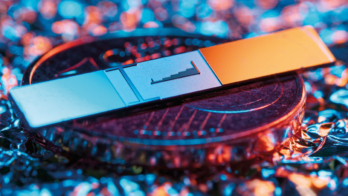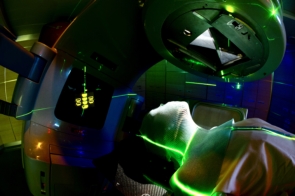The 1998 EPS-IGA prize for outstanding work in the accelerator field was awarded to CERN’s Cris Benvenuti for “major breakthroughs in achieving ultra-high vacua in storage rings using the NEG system, and for the development of niobium coatings of superconducting radio-frequency cavities in LEP”.

Getters are materials with a strong affinity for gases which molecules stick to like fluff to sticky tape. At CERN’s Large Electron-Positron collider, LEP, getters provide ultra-high vacuum. Now a new thin-film alloy developed at CERN promises even better vacuum, and could also spell good news for avid television watchers.
Since the advent of particle storage rings, high-energy physics and vacuum technology have advanced hand-in-hand. Storage rings demand high vacuum so particle beams are not lost through collisions with stray gas molecules, and getter pumps are commonly used. The most widely used getters in accelerators work by heating a titanium filament causing sublimation, the direct conversion of titanium metal to gas. This gas is then deposited on the surrounding vacuum vessel where it traps stray gas molecules in the vacuum chamber.
These so-called sublimation pumps provide a localized pumping action, whereas particle accelerators require distributed pumping. In the 1970s Cris Benvenuti addressed this problem by developing a new way of using getters for CERN’s LEP. The accelerator’s main pumping system is provided by linear strips of non-evaporable getters, NEGs, which cover 23 kilometres of the accelerator’s 27 kilometre ring. They are made of a zirconium-aluminium alloy which is activated by heating to 750 °C. Instead of sublimating the gettering material, heating gives the oxygen enough energy to diffuse into the bulk material, leaving a clean surface to trap any residual gas inside LEP’s beam pipe.
In LEP, vacuum is established by sealing the accelerator’s vacuum chamber, heating to around 150 °C to remove any residual water vapour – the so-called “bake-out”, and pumping with conventional suction pumps. Baking out at 750 °C is not possible, however, because it would damage the vacuum chamber. A gettering material which could be activated at a lower temperature would obviate the need for electrical heating, and thus the need for electrical insulation from the beam pipe.
In the 1970s, the world’s foremost manufacturer of getters, SAES Getters in Milan, developed a gettering material which is activated at 400 °C. This is now widely used in steel vacuum systems which can withstand a high bake-out temperature. In particle accelerators, however, lighter materials are often required. LEP’s vacuum chamber, for example, is made of aluminium and 200 °C is the bake-out limit. Another technology brought to fruition by Benvenuti’s team has provided a way forward. The cavities which pump energy into LEP’s beams rely on superconducting niobium. Early cavities are made of solid niobium, but since only a thin layer is needed, Benvenuti’s team set to work on techniques to coat copper cavities with niobium to the high degree of uniformity required. Their work has resulted in over 90% of the accelerator’s superconducting cavities being made from niobium-coated copper, whilst only 20 are made from solid niobium.
With Benvenuti’s long association with vacuum, it was not long before his team turned its thin-film experience to the gettering question. Three years of development have resulted in two patents and a zirconium-vanadium-titanium alloy, discovered earlier this year, which is fully activated after 24 hours at 200 °C, low enough for any vacuum chamber’s bake-out. Moreover, this new alloy can be used as a thin-film coating of the vacuum chamber walls which gives the added bonus of effectively eliminating or strongly suppressing out-gassing from the underlying vacuum chamber. CERN’s next major accelerator project, the Large Hadron Collider, is currently evaluating the new alloy with a view to using it in certain sections of the accelerator. So what of that good news for television fans? Flat-screen displays are a much-touted new technology, but they have yet to make a significant impact on the market. Liquid-crystal displays are currently the most common, but they are expensive. An alternative technology is field-emission displays, FEDs. These work by using a single field-emission diode to illuminate each pixel of the screen, and they require ultra-high vacuum to work. Benvenuti’s zirconium-vanadium titanium alloy could be just the ticket.
- This article was adapted from text in CERN Courier vol. 38, December 1998, pp21–23





